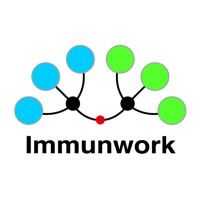预约演示
更新于:2025-05-07
APP x TfR1
更新于:2025-05-07
关联
3
项与 APP x TfR1 相关的药物作用机制 APP抑制剂 [+1] |
在研适应症 |
非在研适应症- |
最高研发阶段临床2期 |
首次获批国家/地区- |
首次获批日期1800-01-20 |
WO2024246085
专利挖掘作用机制- |
非在研适应症- |
最高研发阶段药物发现 |
首次获批国家/地区- |
首次获批日期1800-01-20 |
作用机制 APP调节剂 [+1] |
在研机构 |
原研机构 |
在研适应症 |
非在研适应症- |
最高研发阶段药物发现 |
首次获批国家/地区- |
首次获批日期1800-01-20 |
4
项与 APP x TfR1 相关的临床试验CTIS2023-509900-14-00
- BP45211
开始日期2025-03-05 |
申办/合作机构 |
JPRN-jRCT2031210091
A Phase I Single Ascending Dose Study of RO7126209 in Healthy Japanese Subjects
开始日期2021-07-07 |
申办/合作机构- |
NCT04639050
A Phase Ib/IIa, Randomized, Double Blind, Placebo-Controlled, Multiple Ascending Dose, Parallel-Group Study to Investigate the Safety, Tolerability, Pharmacokinetics, and Pharmacodynamics of RO7126209 Following Intravenous Infusion in Patients With Prodromal or Mild to Moderate Alzheimer's Disease
The purpose of this study is to evaluate the safety, tolerability, immunogenicity, pharmacokinetics, and pharmacodynamics of multiple-ascending intravenous (IV) doses of RO7126209 in participants with prodromal or mild to moderate Alzheimer's disease (AD), who are amyloid positive based on amyloid positron emission tomography (PET) scan.
开始日期2021-03-15 |
申办/合作机构 |
100 项与 APP x TfR1 相关的临床结果
登录后查看更多信息
100 项与 APP x TfR1 相关的转化医学
登录后查看更多信息
0 项与 APP x TfR1 相关的专利(医药)
登录后查看更多信息
80
项与 APP x TfR1 相关的文献(医药)2025-05-01·International Immunopharmacology
Berberine alleviates Alzheimer's disease by activating autophagy and inhibiting ferroptosis through the JNK-p38MAPK signaling pathway
Article
作者: Sun, Chunbin ; Gao, Xiaoyu ; Sha, Shuang ; Guan, Hongyan ; Du, Hongwu ; Li, Luping ; Shan, Yubang ; Wang, Si ; Xing, Cencan
2025-01-01·Colloids and Surfaces B: Biointerfaces
Multifunctional mesoporous nanoselenium delivery of metformin breaks the vicious cycle of neuroinflammation and ROS, promotes microglia regulation and alleviates Alzheimer's disease
Article
作者: Yuan, Xiaoyu ; Chen, Yutong ; Zhang, Li ; Guo, Xian ; Liu, Yanan ; Zhang, Borui ; Jia, Zhi ; Liu, Jie
2024-12-31·mAbs
Single domain antibody-scFv conjugate targeting amyloid β and TfR penetrates the blood–brain barrier and interacts with amyloid β
Article
作者: Sjöström, Elisabet O. ; Berglund, Magnus M. ; Dallas, Tiffany ; Faresjö, Rebecca ; Syvänen, Stina ; Sehlin, Dag ; Eriksson, Jonas
29
项与 APP x TfR1 相关的新闻(医药)2025-04-28
·空之客
1整体表现虎落平阳的肿瘤一哥罗氏,医药板块的业绩在去年上半年一波起色后,又陷于环比停滞,因而市值也就只能在$250b左右徘徊不前。全年指引基本维持不变,收入增长预计在mid single digit、EPS增长也就high single digit,这就很欧洲。2已上市产品过去两年独撑业绩危局的眼科双抗Vabysmo渐有触顶之态,好在Phesgo勉强顶上来,但整个产品梯队中已然看不到大额增量的来源,不过好在LOE的一堆抗体药物已经出清得差不多了,因此整体看起来还能保持同比微涨的趋势。肿瘤板块在彻底挥别老一代传奇重磅品种之后,新生代虽有表现,但仍难达到续写辉煌的水平。HER2复方抗体Phesgo的市场转化率已经爬升到47%,距离公司宣称的50%目标已所剩无几,单季接近CHF600m,应该有在中国通过谈判纳入医保目录的贡献,LTM累计CHF1.9b;ADC药物Polivy在1L DLBCL的份额也爬升至31%,单季CHF358m、LTM累计CHF1.2b;而两款CD20/CD3双抗在末线依然无甚起色,单季合计迟迟无法突破CHF100m,即使距离公司宣称的末线峰值销售额CHF700m也遥遥无期。自免板块最核心的仍是Ocrelizumab,皮下制剂看起来正在兑现预期,持续推动销售额爬坡,单季CHF1.8b、LTM累计CHF6.9b,而且4月已拿到J-code,此外皮下制剂有50%新患此前并没有用过Ocrelizumab,这都验证着皮下制剂确有可能大幅延长Ocrelizumab的生命周期。公司维持着峰值销售额CHF8.5b的预期,其中皮下制剂占CHF2b。前两年事实上ROG业绩的扛把子,终于也开始放缓:眼科双抗Faricimab环比下滑,单季CHF1.2b、LTM累计CHF4.0b,主要是美国市场新患的市场份额已经高达60%、以及基金会赠药的减少,只能靠欧洲和刚进医保的中国市场,公司预计年内还能维持20%左右同比增长;而血友病双抗Emicizumab因美国渠道商采购节奏的影响出现环比回落,欧洲也基本失去增速,只有国际市场还有70%同比增速;SMA药物Risdiplam连续多个季度走平,基因治疗Elevidys获批后短暂单季破CHF100m后又迅速滑落。3在研管线就凭现在这个核心管线进展图,已经有点难以想象ROG曾经是肿瘤霸主,而今的研发重点则迁移到心血管代谢、神经、自免等方向,甚至季报里公然出现了“Roche's commitment to become a leader in CVRM”这种违背祖宗遗训之词。既然都CVRM leader了,任何减肥靶点都不能错过,于是这个季度就以$1.65b upfront + $3.6b milestone拿下了Zealand的Amylin类似物Petrelintide,这是继Carmot之后在减肥领域FoMo心态的又一次淋漓尽致的体现。接下来是神经板块的两个重要管线数据读出:TfR1介导的透脑抗体Trontinemab,公布了1/2期临床中期分析数据,给药28周后1.8和3.6mpk剂量组的Aβ PET转阴比例为65%和81%,并且ARIA发生率较低;α-synuclein单抗Prasinezumab公布了2b期临床PADOVA试验的左旋多巴胺治疗人群的结果,虽然整个试验主要终点未达到显著性,但这个subgroup勉强显著,HR=0.79(0.63, 0.99)、p=0.0431,维持着这个靶点继续走下去的希望。然后是自免板块,在TCE和CAR-T风起云涌的背景下,朴实无华的CD20单抗Obinutuzumab在NEJM上发表了三期临床REGENCY试验结果,给药76周后,Obinutuzumab联合SOC(霉酚酸酯+糖皮质激素)与单纯SOC对比,肾脏缓解率CRR为46.4% vs 33.1%,p=0.0232,sBLA已提交,PDUFA在今年10月;不过另一边Ocrelizumab高剂量组却在治疗RMS的三期临床MUSETTE试验中未能达到主要临床终点。此外还有一个重要管线,二代血友病双抗NXT007进入三期临床(一代Hemlibra年销售额高达CHF4.6b),在NVO的Mim8三期临床已经读出的背景下,ROG也势必要维护在这一细分适应症的地位。那么肿瘤板块呢?主要就看TIGIT单抗Tiragolumab从失败走向失败,联用PD1治疗nsq-NSCLC的SKYSCRAPER-06因未能显著改善OS而被正式终止,联用PD1治疗食管癌的SKYSCRAPER-07也被终止,连同过去几个季度的各种坏消息,TIGIT目前也只剩HCC等少数几个瘤种明面上还在开发……除此以外,值得关注的进展还包括:Susvimo获得FDA批准治疗DME,Glofitamab联用GemOx获得欧洲批准治疗2L+ DLBCL,Mosunetuzumab联用Polivy治疗2L+ DLBCL的三期临床SUNMO试验积极结果公布等。Roche总给人一种值得进商学院教科书的感觉,其兴也肿瘤、其落也肿瘤,最强大的能力铸就了曾经的辉煌、也可能恰恰成为眼下的桎梏。如今的Roche,从巅峰落下后短短几年时间,无论是业绩支柱、还是重点研发方向,几乎已经看不到多少当年在肿瘤领域叱咤风云的影子,不知道在心血管代谢、神经、免疫等领域的救赎,是否还能复现Genentech时代的威仪?罗氏ROG往期季报分析:【医苑观畴】主流技术方向谁说了算:2022年上半年全球大药企核心产品管线进展总览【医苑观畴】主流技术方向谁说了算:2022年下半年全球大药企核心产品管线进展总览【医苑观畴】2023年上半年全球大药企核心进展总览【医苑观畴】2024年二季度海外药企进展更新:罗氏ROG【医苑观畴】2024年三季度海外药企进展更新:罗氏ROG
抗体药物偶联物引进/卖出
2025-04-06
·药明康德
▎药明康德内容团队编辑本期看点1. Arvinas公司宣布,其靶向富含亮氨酸重复激酶2(LRRK2)的在研靶向蛋白降解剂ARV-102在首个人体临床试验中表现出良好的安全性和耐受性,并显著降低中枢神经系统和外周LRRK2水平,支持其在神经退行性疾病中的继续评估。2. 罗氏(Roche)新一代阿尔茨海默病疗法在1b/2a期临床试验中快速清除受试者大脑中的β淀粉样蛋白(Aβ),计划今年启动3期临床试验。药明康德内容团队整理Arvinas帕金森病蛋白降解疗法临床结果积极Arvinas公司公布了其在研靶向蛋白降解嵌合体(PROTAC)候选药物ARV-102的首次人体临床试验数据。ARV-102是一种针对富含亮氨酸重复激酶2(LRRK2)的蛋白降解剂。LRRK2是一种大型多结构域支架激酶。LRRK2活性和表达升高被认为与多种神经系统疾病的发病机制相关,包括LRRK2基因型和散发型帕金森病以及进行性核上性麻痹。试验的主要发现包括:ARV-102在单次或多次给药后总体安全性良好,未报告严重不良事件ARV-102在脑脊液(CSF)中的暴露呈剂量依赖性增加,表明其具有良好的穿越血脑屏障的能力单次口服剂量≥60 mg,或每日重复口服剂量≥20 mg时,CSF中LRRK2降解率超过50%,外周单核细胞中LRRK2降解率超过90%,表明ARV-102可实现中枢神经系统及外周LRRK2蛋白的显著降解单次给药后观察到外周单核细胞中磷酸化Rab10的显著减少,这是LRRK2下游活性的生物标志物除了在健康志愿者中进行的这项1期临床试验,Arvinas也已在帕金森病患者中启动了ARV-102的1期单剂量递增(SAD)临床试验给药。公司预计将在2025年完成该SAD队列的入组并公布初步数据,并将在帕金森病患者中启动多剂量递增队列的临床研究。该公司首席医学官Noah Berkowitz博士在新闻稿中表示,ARV-102能够穿越血脑屏障并降解LRRK2蛋白的能力,为治疗严重神经退行性疾病提供了潜在的颠覆性治疗策略。罗氏新一代阿尔茨海默病疗法快速清除β淀粉样蛋白罗氏日前公布了其新一代抗Aβ抗体trontinemab在1b/2a期临床试验Brainshuttle AD中的最新结果。初步数据显示,114名参与者接受trontinemab治疗后,经淀粉样蛋白正电子发射断层扫描(PET)测量,其脑内淀粉样蛋白斑块迅速且明显地呈剂量依赖性减少。28周后,在3.6 mg/kg剂量组中,81%的参与者(n=21/26)的淀粉样蛋白斑块几乎全部清除。根据该领域数据,降低淀粉样蛋白斑块的速度以及早期将其降至阳性阈值以下的能力,对于在早期阿尔茨海默病患者中实现具有临床意义的益处至关重要。Trontinemab是一款运用罗氏大脑穿梭(brain shuttle)技术的新一代抗淀粉样蛋白单克隆抗体。它将靶向淀粉样蛋白的单克隆抗体与可以和转铁蛋白受体相结合的蛋白域融合,可以有效协助抗体穿越血脑屏障,在用药3-6个月后可以快速有效地清除大脑中的淀粉样蛋白沉积。罗氏计划在今年晚些时候,启动trontinemab的3期临床试验。KER-065:公布1期临床试验初步顶线结果Keros Therapeutics日前公布了KER-065在健康志愿者中进行的1期临床试验的初步顶线结果。KER-065是一种激活素受体IIA(ActRIIA)和激活素受体IIB(ActRIIB)配体陷阱(ligand trap),被设计用于结合并抑制肌生长抑制蛋白和激活素A,从而促进骨骼肌再生、增加肌肉体积和力量、降低体脂、减少骨骼肌纤维化并增强骨骼强度。Keros Therapeutics正在开发KER-065用于治疗神经肌肉疾病,初步聚焦于杜氏肌营养不良症(DMD)。试验的主要发现包括:KER-065总体耐受性良好,未报告严重不良事件或剂量限制性毒性在各相关组织中均显示出对激活素抑制作用的证据,受试者身体成分发生改变,表现为骨密度和肌肉量增加、脂肪量减少,这些变化总体上与激活素信号通路被抑制一致CER-1236:IND申请获FDA许可CERo Therapeutics公司宣布,该公司为在研细胞疗法CER-1236递交的IND申请已获得美国FDA的许可,用于针对晚期实体瘤的1期临床试验,具体包括非小细胞肺癌和卵巢癌。新闻稿指出,CER-1236是首个以Tim-4L为靶点的CAR-T细胞疗法,也是首个通过改造T细胞,赋予其吞噬活性的疗法。临床前数据表明,这种双重机制可能有助于克服一直困扰实体瘤CAR-T细胞疗法的耐药障碍。RB-164:IND申请获FDA许可Radiance Biopharma日前宣布,该公司为在研抗体偶联药物(ADC)RB-164递交的IND申请已经获得美国FDA的许可。它是一种以ROR-1为靶点的ADC。该IND支持在美国启动RB-164的1期剂量递增及扩展临床试验,试验对象为ROR-1阳性的血液癌症及实体瘤患者。RB-164是一种新一代ADC,采用Fc静默单克隆抗体靶向ROR-1,并通过位点特异性偶联实现药物/抗体比例分布均一,从而改善药代动力学及毒理学特性,其药物载荷为MMAE。EPI-321:IND申请获FDA许可Epicrispr Biotechnologies宣布,在研疗法EPI-321的IND申请已获FDA的许可。EPI-321是一种潜在“first-in-class”的表观遗传学疗法,用于治疗面肩肱肌营养不良症(FSHD),这是一种遗传性神经肌肉疾病。该公司计划于2025年启动全球性1/2期临床试验。EPI-321是一种在研一次性基因调节疗法,旨在抑制DUX4的异常表达,DUX4是一种在FSHD中被错误激活并导致渐进性肌肉变性的基因。EPI-321通过临床验证的腺相关病毒(AAV)载体进行全身给药,在临床前模型中已证明它能有效抑制DUX4的表达并保护肌肉组织。EPI-321已获得FDA快速通道资格、罕见儿科疾病认定和孤儿药资格。DM-101PX:1期临床试验结果积极Desentum Oy公司日前宣布了在研桦树花粉过敏疫苗DM-101PX的积极1期临床数据。数据显示,DM-101PX的短程治疗在桦树花粉过敏患者中表现出良好的安全性和耐受性,并能诱导出非常强烈且持久的过敏原特异性IgG4应答。研究发现,DM-101PX诱导产生的免疫球蛋白能够有效阻断IgE介导的嗜碱性粒细胞激活,从而支持该产品有望诱导出保护性免疫应答。DM-101PX是一款用于免疫治疗桦树花粉过敏的在研疗法,其活性成分是主要桦树花粉过敏原Bet v 1的重组变体,通过基因工程改造降低了其致敏性,同时保留了所需的免疫学特性。▲欲了解更多前沿技术在生物医药产业中的应用,请长按扫描上方二维码,即可访问“药明直播间”,观看相关话题的直播讨论与精彩回放参考资料(可上下滑动查看)[1] CERo Therapeutics Holdings, Inc. Receives FDA Clearance of Second Investigational New Drug Application to Initiate Phase 1 Clinical Trial of Lead Compound CER-1236 in Solid Tumors. Retrieved March 31, 2025, from https://www.globenewswire.com/news-release/2025/03/31/3052257/0/en/CERo-Therapeutics-Holdings-Inc-Receives-FDA-Clearance-of-Second-Investigational-New-Drug-Application-to-Initiate-Phase-1-Clinical-Trial-of-Lead-Compound-CER-1236-in-Solid-Tumors.html[2] Keros Therapeutics Announces Initial Topline Results from the Phase 1 Clinical Trial of KER-065 in Healthy Volunteers. Retrieved March 31, 2025, from https://www.globenewswire.com/news-release/2025/03/31/3052085/0/en/Keros-Therapeutics-Announces-Initial-Topline-Results-from-the-Phase-1-Clinical-Trial-of-KER-065-in-Healthy-Volunteers.html[3] Radiance Announces FDA Clearance of IND Application for a Phase 1 Clinical Trial of RB-164™, an ROR-1 Targeted ADC, for Hematologic and Solid Malignancies. Retrieved March 31, 2025, from https://www.globenewswire.com/news-release/2025/03/31/3052547/0/en/Radiance-Announces-FDA-Clearance-of-IND-Application-for-a-Phase-1-Clinical-Trial-of-RB-164-an-ROR-1-Targeted-ADC-for-Hematologic-and-Solid-Malignancies.html[4] Epicrispr Biotechnologies Announces FDA Clearance of IND Application for EPI-321, A First-in-Class Epigenetic Therapy for FSHD. Retrieved April 5, 2025, from https://epicrispr.com/epicrispr-biotechnologies-announces-fda-clearance-of-ind-application-for-epi-321-a-first-in-class-epigenetic-therapy-for-fshd/[5] Desentum reports strong safety and immunological data from Phase 1 clinical study with investigational birch pollen allergy vaccine DM-101PX. Retrieved April 5, 2025, from https://desentum.fi/news/desentum-reports-strong-safety-and-immunological-data-from-phase-1-clinical-study-with-investigational-birch-pollen-allergy-vaccine-dm-101px/[6] Vividion Therapeutics Doses First Patient in Phase I Study of RAS-PI3Kα Inhibitor for Treatment of Advanced Solid Tumors. Retrieved April 5, 2025, from https://www.businesswire.com/news/home/20250403585991/en/Vividion-Therapeutics-Doses-First-Patient-in-Phase-I-Study-of-RAS-PI3K-Inhibitor-for-Treatment-of-Advanced-Solid-Tumors[7] Pretzel Therapeutics Initiates Phase 1 Clinical Study Evaluating PX578, Lead Therapeutic in its Bioenergetics Restoration Franchise. Retrieved April 5, 2025, from https://www.businesswire.com/news/home/20250403945637/en/Pretzel-Therapeutics-Initiates-Phase-1-Clinical-Study-Evaluating-PX578-Lead-Therapeutic-in-its-Bioenergetics-Restoration-Franchise[8] Arvinas Presents First-in-Human Data for Investigational Oral PROTAC ARV-102 Demonstrating Blood-Brain Barrier Penetration, and Central and Peripheral LRRK2 Degradation. Retrieved April 5, 2025, from https://ir.arvinas.com/news-releases/news-release-details/arvinas-presents-first-human-data-investigational-oral-protac[9] Roche presents novel therapeutic and diagnostic advancements in Alzheimer’s at AD/PD 2025. Retrieved April 5, 2025, from https://www.roche.com/media/releases/med-cor-2025-04-03[10] Jabez Biosciences, Inc. Announces First Patient Dosed in Phase 1 Oncology Clinical Study of JBZ-001. Retrieved April 5, 2025, from https://www.jabezbio.com/2025/04/03/jabez-biosciences-inc-announces-first-patient-dosed-in-phase-1-oncology-clinical-study-of-jbz-001/免责声明:药明康德内容团队专注介绍全球生物医药健康研究进展。本文仅作信息交流之目的,文中观点不代表药明康德立场,亦不代表药明康德支持或反对文中观点。本文也不是治疗方案推荐。如需获得治疗方案指导,请前往正规医院就诊。版权说明:本文来自药明康德内容团队,欢迎个人转发至朋友圈,谢绝媒体或机构未经授权以任何形式转载至其他平台。转载授权请在「药明康德」微信公众号回复“转载”,获取转载须知。分享,点赞,在看,聚焦全球生物医药健康创新
临床3期临床1期临床结果蛋白降解靶向嵌合体临床2期
2025-02-08
关注并星标CPHI制药在线
同样作为拥有广大患者数量的适应症,阿尔茨海默病与肥胖症的医药开发似乎处于完全不同的两条赛道之上,给人一种“君向潇湘我向秦”的感觉。减肥药市场一片百舸争流的大干快上景象,不仅已经上市的Wegovy和Zepbound令诺和诺德和礼来两大制药商领略到了“山顶千门次第开”的感受,为数众多的追随者也在“一波才动万波随”地争取跻身这个庞大的市场。而另一边,以阿尔茨海默病为代表的中枢神经系统疾病,尽管面对着同样庞大的商业机会,制药商们却一直在“多歧路,今安在”的道路上龃龉其中。2025年,阿尔茨海默病疗法开发能像肥胖症药物一样迎来“花开堪折直须折”的自由境界吗?
1. 阿尔茨海默病疗法开发的2024困顿
阿尔茨海默病与肥胖症疗法开发的一个相似点,就是这两种适应症的致病机理人们仍然没有完全搞清楚,在开发过程中都给人一种摸着石头过河的感觉。索性肥胖症疗法的开发得益于二型糖尿病GLP-1疗法开发过程中的“意外”发现,实现了截弯取直的快速发展。同样作为病理复杂的适应症,阿尔茨海默病不仅在生物标志物方面还存在争议,还面临着如何实现脑部递送的巨大的挑战。除此之外,以Aduhelm,Leqembi和Kisunla为代表的靶向脑部Aβ (β-amyloid,β淀粉样蛋白)的抗体药物,还存在着ARIA (Amyloid-Related Imaging Abnormalities,淀粉样蛋白相关的成像异常)的黑框警告,包括脑水肿和脑出血,这为阿尔茨海默病疗法的开发增加了极大的挑战。反观GLP-1药物,副作用大多数恶心和呕吐这样相对轻微的表现,在安全性方面的门槛要低很多。
2024年,阿尔海默病疗法开发遭遇的挫折几乎就是减肥药成功的镜相对照。
2024年1月底,当年顶着巨大争议上市的首款抗Aβ抗体阿尔茨海默病药物Aduhelm (aducanumab) 被其开发商渤健宣布撤市,而此前渤健已经撤回了Aduhelm向EMA递交的上市申请。Aduhelm“其兴也勃焉,其亡也忽焉”的故事为制药行业留下了众多的话题和思考。
2021年6月,FDA在先前的专家咨询委员会会议压倒性的1票支持、8票反对,2票弃权的情况下,仍然一意孤行地批准了Aduhelm的上市申请(专家咨询委员会投票结果对于FDA最终决定不具备约束性影响)。顶着巨大争议上市的Aduhelm的商业化效果并不理想,不仅过高的标价成为了业界诟病的问题(渤健最初将Aduhelm的年度治疗成本定价为56000美元),而且在有效性和安全性方面的争议已然不绝于耳,最终渤健做出了将Aduhelm撤市的决定,转而重点运作另一款获得FDA批准的阿尔茨海默病抗Aβ抗体疗法Leqembi(lecanemab)上。渤健强调,撤市的决定并不在于Aduhelm的安全性和有效性,而是出于战略考量,有一点“此天意,非战之罪”的姿态。
Aduhelm的“尔曹身与名俱灭”,似乎是很多兴勃亡忽的中枢神经系统疾病疗法殊途同归的命运。
罗氏在2024年10月宣布了终止与UCB共同开发阿尔茨海默病候选药物bepranemab的决定,这也是罗氏2024年第三次放弃阿尔茨海默病项目。早在1月,罗氏就将两项合作开发的阿尔茨海默病资产归还给了AC Immune。
罗氏与UCB于2020年达成的合作原本包括1.2亿美元的预付款和高达20亿美元的潜在里程碑付款。这项合作的关注点,在于靶向tau蛋白的bepranemab。Tau蛋白同β-淀粉样蛋白一样被视为阿尔茨海默病的生物标志物。tau蛋白的水平和磷酸化状态常被用作生物标志物。Tau蛋白不仅是阿尔茨海默病的关键生物标志物,也是开发新治疗方法的潜在靶点,其靶向药物的命运在一定程度也昭示着目前阿尔茨海默病疗法开发能够走出Aβ的圭臬樊笼。然而bepranemab的IIa期临床试验结果却令罗氏兴致阑珊,最终决定将该药物的开发权交还给UCB。
值得注意的是,虽然罗氏终止了与UCB的合作, 但他们仍对tau靶向疗法开发保持了浓厚兴趣。罗氏仍在试图针对 tau 蛋白开发阿尔茨海默病疗法,包括与 Sangamo Therapeutics Inc. 建立的临床前合作,两家公司于 2024年8 月签署了 一项价值5000 万美元预付款的协议。在罗氏的管线中,有一款“嫡出”的抗tau蛋白抗体资产trontinemab。它采用罗氏的“脑穿梭(Brainshuttle)”技术,以蛋白质之躯跨越血脑屏障,靶向并抑制β淀粉样蛋白。这种技术允许大分子在不触发对周围细胞的免疫反应的情况下穿过血脑屏障。
2. 阿尔茨海默病疗法开发,病入新年感物华
虽然阿尔茨海默病疗法在过往岁月更多以“命运多舛”的形象示人,但在这个领域仍然给众多开发者“桃花又是一年春”的希冀,包括渤健、卫材、礼来、罗氏和诺和诺德在内的制药公司依然加大了这个领域的投资力度,任何临床试验的成功或药物批准的突破都可能对股价产生重大影响。投资者高度重视以阿尔茨海默病为代表的中枢神经系统疾病的潜在商业价值。根据Bloomberg预测,到 2030 年阿尔茨海默病的市场规模可能达到 130 亿美元。
渤健和卫材的上市药物Leqembi 目前的递送方式为静脉输注,但他们也在开发一种能够在家给药的Leqembi皮下注射版本。渤健和卫材已于2024年11月向FDA递交了这款Leqembi的BLA申请。皮下自动注射器用于每周维持给药,此前已获得 FDA 快速通道资格。
这款皮下注射版本的Leqembi如果获得 FDA 批准,患者可以在家中或者医疗机构中完成给药,注射过程只需要15秒钟。相比之下,Leqembi的静脉输注制剂每两周给药一次,每次的注射时间大约在1小时左右。根据卫材公布的数据,皮下注射Leqembi治疗产生的淀粉样斑块清除率高于每两周静脉注射。Leqembi皮下注射版本是否能在2025年获得FDA的批准,这成为了阿尔茨海默病开发领域和投资者关注的焦点之一。
礼来公司的 抗Aβ抗体药物Kisunla(donanemab) 2024 年 7 月获得 FDA 批准,Kisunla未来是否将与Leqembi颉颃前行还是脱颖而出,也是阿尔茨海默病疗法投资者关注的重点。
除了Kisunla之外,礼来的管线中还有一款阿尔茨海默病资产remternetug,可以通过静脉或皮下的途径给药。Remternetug是一款抗焦谷氨酸Aβ抗体药物正处于临床III期阶段。据Bloomberg称,Remternetug的III期试验将评估其淀粉样斑块清除率和安全性,以判断其在有效性上是否胜过已上市的donanemab。Remternetug 的试验结果可能会在今年年底或 2026 年初公布。
罗氏在做出了终止了与USB共同开发bepranemab的合作之后,并没有在开发阿尔茨海默病疗法的道路上选择“行至水穷处,坐看云起时”的姿态,而是独自开发了他们自己的trontinemab。值得注意的是,罗氏在开发trontinemab的项目中使用了可穿越血脑屏障的技术平台Brainshuttle,如果成功,将为中枢神经系统疾病疗法的开发引入革命性的影响。巴克莱银行认为罗氏针对trontinemab的开发不会半途而废,而将继续进行中后期的研究。之所以这么说,是因为trontinemab本质上是 gantenerumab 的更新版本,gantenerumab 是罗氏之前对阿尔茨海默病的重大赌注,但最终未能减缓认知能力下降。
尽管罗氏从bepranemab的合作项目中抽身而出,但开发它的比利时制药巨头UCB预计仍将在bepranemab的开发道路中继续上下求索。在去年的一项II期临床研究中,bepranemab未能达到主要临床终点,但的确减缓了认知能力的下降和生物标志物tau蛋白在大脑中的积累速度。一些分析师指出,bepranemab 具有相对较强的安全性数据,应该具备与其它疗法组成联合疗法治疗阿尔茨海默病的潜力。
3. GLP-1药物能否“达则兼济天下”?
阿尔茨海默病未来疗法开发的一个重要看点,在于病理机制的深入研究是否能够突破目前囿于Aβ蛋白清除的樊笼。除了Aβ蛋白之外,tau蛋白也是一个重要的生物标志物,但也有很多公司在开发道路上选择了与这两个“部分存疑”的生物标志物不同的途径。进行GLP-1药物开发的公司,包括诺和诺德在内的几家制药商已经押注于此类药物治疗阿尔茨海默症的潜力。例如丹麦公司Kariya 正在开发 KP405,这是一种GLP-1/GIP双受体共激动剂,与礼来的tirzepatide师出同门。KP405最初用于治疗帕金森病,未来可能针对阿尔茨海默病进行研究。KP405的特别之处在于,它并没有使用semaglutide和tizepatide的脂化技术,而是在药物结构中添加了细胞膜受体识别的 TAT 序列,这使得药物分子可能穿越血脑屏障而进入大脑病灶。
诺和诺德在2型糖尿病和肥胖症上大获成功的GLP-1药物semaglutide也在针对阿尔茨海默病进行研究。去年的一项研究表明,服用semaglutide的患者被诊断出患有阿尔茨海默病的风险显著降低。诺和诺德目前正在测试semaglutide是否能使早期阿尔茨海默病患者受益,预计将从两项大型 III 期试验 EVOKE 和 EVOKE Plus 中读取结果,测试semaglutide对阿尔茨海默病患者的作用。预计EVOKE将于 2025 年 9 月公布顶线数据,而EVOKE Plus则将在2026年10月读数。
使用 GLP-1 治疗阿尔茨海默病的想法并非空穴来风。人们一直对用于治疗糖尿病和针对代谢疾病和内分泌疾病途径的药物是否会对阿尔茨海默病产生影响感兴趣。虽然关于阿尔茨海默病的真正病因存在很多争论,糖尿病和肥胖症与阿尔茨海默病之间可能存在交集。事实上,有几项研究表明胰岛素抵抗与阿尔茨海默病之间存在联系。导致有些人将阿尔茨海默病称为“3 型糖尿病”。多项观察性研究和荟萃分析也建立起了 2 型糖尿病与阿尔茨海默病的风险增加。
随着年龄的增长,整个身体的胰岛素抵抗都会增加,这意味着细胞无法吸收足够的葡萄糖。当葡萄糖水平不理想而且高度活跃的神经元无法获得足够的能量时,它们就会出现功能障碍并最终慢性死亡。这种内在关联是具有一定道理的。如果胰岛素抵抗确实是阿尔茨海默病的一个诱因,那么 GLP-1 可能有助于延缓这种疾病,因为它通过刺激胰岛素分泌和减缓胰高血糖素释放来发挥作用。
此前GLP-1药物利拉鲁肽(liraglutide)的一项II 期试验的结果支持了这样的假设。那项研究在英国多个地点随机对 204 名受试者进行安慰剂或利拉鲁肽治疗。结果发现,在一年的治疗中,利拉鲁肽组的认知功能下降速度比安慰剂组慢 18%。研究人员指出,脑容量损失速度较慢表明利拉鲁肽可以保护大脑,就像他汀类药物可以保护心脏一样。利拉鲁肽可以减少脑部炎症、降低胰岛素抵抗、改善神经细胞通讯并限制淀粉样蛋白β和 tau 的危害。
尽管某些研究出现了积极的迹象,但专家们一致认为,GLP-1 仍有很长的路要走,才能证明其在阿尔茨海默病治疗中的价值,这需要在随机对照试验中对大量患者进行分析,这其实是一项非常艰巨的工作。
4. 直捣黄龙,药物递送的突破
相对于稍显踯躅的病理研究,阿尔茨海默病疗法递送领域的开发已经取得了明显的突破,最主要的表现在于新一代的药物分子开始注重直接穿越血脑屏障的能力。例如前面提到的罗氏开发的trontinemab,就利用了最新技术平台Brainshuttle技术。Brainshuttle是凭借与TfR(Transferrin Receptor转铁蛋白受体)的作用实现血脑屏障的跨越。Trontinemab将抗TfR抗体模块与阿尔茨海默病抗体Gantenerumab(罗氏上一代的阿尔茨海默病抗体候选药)融合,与血脑屏障上皮细胞上的TfR受体结合。这种结合产生内体隔室,内体隔室穿过细胞质并通过转胞吞作用进入大脑(图1)。因此从本质上说,trontinemab是一款2 + 1 双特异性单体,可双价结合 Aβ蛋白,单价结合人 TfR1。
图1. Brainshuttle技术支持的trontinemab穿越血脑屏障机制。
(图片来源:Neuron)
艾伯维通过14亿美元收购Aliada Therapeutics获得的关键资产阿尔茨海默病候选药物ALIA-1758也利用了类似的递送机制。ALIA-1758是一款抗β淀粉样蛋白(焦谷氨酸β淀粉样蛋白(3pE-Aβ))抗体药物。ALIA-1758通过专有技术Modular Delivery (MODEL) 平台设计,可以穿越血脑屏障而不触发神经毒性。
MODEL平台将抗TfR抗体模块与阿尔茨海默病抗体融合,与血脑屏障上皮细胞上的TfR受体结合。这种结合产生内体隔室,内体隔室穿过细胞质并通过转胞吞作用进入大脑。MODEL平台不仅可以携带抗体,也可以携带寡核苷酸、多肽、酶和其它蛋白,通过结合TfR或CD98的方式跨越血脑屏障。
礼来与卫材最近也在利用各自的专有技术开发可穿越血脑屏障的中枢神经系统疾病疗法。礼来使用的是QinoTrans平台,通过工程化蛋白结合血脑屏障上的受体,以此穿越该屏障。卫材去年与瑞典生物技术公司BioArctic达成协议,获得了后者的BioArctic BrainTransporter技术的使用权限,开发通过与血脑屏障受体结合而抵达大脑的阿尔茨海默病药物。
5. 面壁十年图破壁
阿尔茨海默病疗法的开发虽然面临巨大挑战,但与当前方兴未艾的减肥药领域有相似之处。减肥药市场在过去几年中因肥胖问题日益严重而加速发展,相关药物的需求不断攀升,促使制药公司加大研发力度,推出了如GLP-1受体激动剂等新型疗法,取得了显著成果。同样,阿尔茨海默病的全球影响力随着人口老龄化迅速扩大,使得开发有效疗法的需求愈发迫切。然而,阿尔茨海默病疗法的开发复杂性远超减肥药,因为其涉及多种致病机制,且有效治疗手段尚不成熟。
尽管如此,正如减肥药领域通过技术突破和市场推动取得了进展,阿尔茨海默病疗法也有望迎来关键性突破,推动其开发进入新的高度,为患者带来实际疗效。精准医学的发展以及生物标志物的应用,将使早期诊断和个性化治疗成为可能,大幅提高治疗的有效性。同时,全球老龄化加剧意味着市场对阿尔茨海默病疗法的需求日益增长,类似减肥药市场的繁荣景象或将在阿尔茨海默病领域重现。尽管开发过程中仍存在诸多科学和临床障碍,但通过创新技术、跨学科合作以及更有效的临床研究设计,未来阿尔茨海默病疗法有望实现重大突破,实现面壁十年图破壁的真正飞跃。
Ref.Constantino, A. K. Biogen drops controversial Alzheimer’s drug Aduhelm to focus on Leqembi, experimental treatments. CNBC. 31. 01. 2024.Merrill, J. Biogen Closes The Book On The Aduhelm Saga. Pink Sheet. 31. 01. 2024.Armstrong, A. Roche Trims Another Alzheimer’s Prospect, Ending UCB Collabortion. Biospace. 22. 10. 2024.Jackson, M. UCB Assessing Bepranemab’s Future After Roche/Genentech Ends Partnership. Scrip. 22. 10. 2024.Kresge, N. et al. Roche CEO Is Optimistic on Coming Alzheimer’s Trial Results. Bloomberg. 23. 10. 2024.Eisai Completes Rolling Submission to US FDA for LEQEMBI® (lecanemab-irmb) Biologics License Application for Subcutaneous Maintenance Dosing for the Treatment of Early Alzheimer’s Disease Under the Fast Track Status. Eisai Press Release. 01. 11. 2024.McKenzie, H. Evidence Mounts for Potential of GLP-1s in Alzheimer’s Disease.Taylor, N. P. AbbVie inks $1.4B Aliada buyout, landing ex-J&J Alzheimer's drug to leap the blood-brain barrier. Fierce Biotech. 28. 10. 2024.Alpert, B. AbbVie’s Deal for Alzheimer’s Antibody Raises Curtain for Roche News on Wednesday. Barron’s. 29. 10. 2024.Qinotto and Lilly Enter Research Collaboration and License Agreement. Globe Newswire. 08. 10. 2024.
扫码领取CPHI & PMEC China 2025展会门票
【智药研习社近期直播】
来源:CPHI制药在线
声明:本文仅代表作者观点,并不代表制药在线立场。本网站内容仅出于传递更多信息之目的。如需转载,请务必注明文章来源和作者。
投稿邮箱:Kelly.Xiao@imsinoexpo.com
▼更多制药资讯,请关注CPHI制药在线▼
点击阅读原文,进入智药研习社~
上市批准高管变更申请上市
分析
对领域进行一次全面的分析。
登录
或

生物医药百科问答
全新生物医药AI Agent 覆盖科研全链路,让突破性发现快人一步
立即开始免费试用!
智慧芽新药情报库是智慧芽专为生命科学人士构建的基于AI的创新药情报平台,助您全方位提升您的研发与决策效率。
立即开始数据试用!
智慧芽新药库数据也通过智慧芽数据服务平台,以API或者数据包形式对外开放,助您更加充分利用智慧芽新药情报信息。
生物序列数据库
生物药研发创新
免费使用
化学结构数据库
小分子化药研发创新
免费使用
